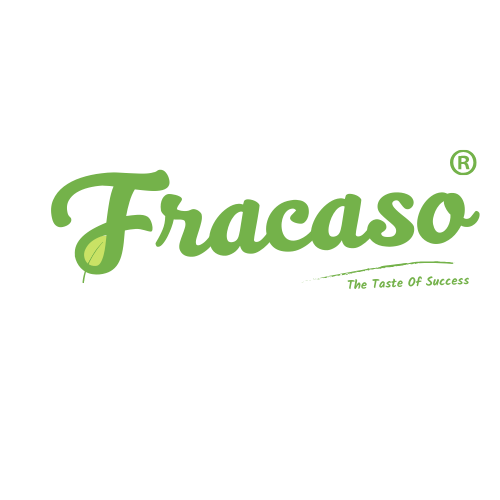
What is Kapha Dosha?
Ayurveda, the ancient science of healing, believes that the universe is composed of five elements – Aakash (space), Vayu (air), Agni (fire), Prithvi (earth), and Jala (water).
These elements combine to form three doshas – Vata, Pitta, and Kapha. A unique ratio of these defines a person’s Ayurvedic constitution.
Kapha is constituted of water (Jala) and earth (Prithvi). It is the principle that holds the cells together to form muscle, fat, bone, marrow, and reproductive tissues, so it is called cellular glue that binds body structures together. It controls structure and fluid balance in the body.
Kapha sthanas (sites): Head, Throat, Chest, Lungs, Connective tissue, Fatty tissue and Ligaments, Lymph, and Tendons

Characteristics of Kapha
- Heavy,
- Slow,
- Cool,
- Sleek,
- Smooth,
- Delicate,
- Thick,
- Stable,
- Gross,
- Cloudy and pleasant voice
Physical characteristics of Kapha
- Large, broad body frame
- Moderate appetite
- Deep and sound sleep
- Pleasant & deep voice
- Moderate sweating
- Thick hair
- Snow-white teeth
- Strong bones and joints
- Healthy immune system
- Good Stamina
- Low Thirst
- Calm & Polite Nature
- Tendency to gain weight
- Smooth & glossy skin
Emotional characteristics of Kapha
Strengths:
- Empathetic,
- Caring,
- Trusting,
- Patient,
- Calm,
- Wise,
- Happy,
- Romantic
Weaknesses:
- Lethargy,
- Ignorance,
- Greedy,
- Inertia,
- Mentally bogged down
- Inflexible
Causes for Kapha Imbalance:
- Eating Cold,
- Heavy and Moist Foods
- Excess Sleep
- Complacency and Attachment
FUNCTIONS OF KAPHA:
- Adherence & Compaction
- Anabolism
- Lubrication to joints
- Formation and maintenance of body fluids and intravascular components
- Growth and development of the body
- Stability and firmness of the body
- Strength
- Defensive mechanism against diseases.
Symptoms of Kapha imbalance:
Behavioural:
- Lethargy
- Greed
- Trouble getting motivated
- Brain fog
- Complacency
- Stubbornness
- Clinging to routines, relationships, or material objects
- Feeling overly sentimental or attached
- Emotional overeating
- Depression and melancholy
Physical:
- Excessive salivation
- Laziness
- Sweet and salty taste in the mouth
- Cough with sputum production
- Chest congestion
- Breathlessness
- Pallor, cold and clammy skin
- Drowsiness
- The sensation of tightening, along with the feeling of heaviness
- The feeling of application of thick paste on the skin
- Whitish discoloration
- Itching (pruritus)
- Excessive sleep
- Numbness and rigidity
Diet for kapha types:

To pacify kapha Ayurveda has given us dietary, lifestyle, and herbal treatment strategies based on the following concepts.
- Cooling
- Surrendering
- Moderation
Adopt:
- Dry, light, pungent, hot, and bitter food.
- It should increase circulation and expulsion of excess Kapha (mucus), supporting proper digestion and elimination.
Avoid:
- Oily, greasy and deep-fried, Re-heated
- Highly processed foods like frozen or pre-packaged
- Stimulants like caffeine, nicotine, etc.
- Red meat
- Fried foods and alcohol
SUKA DHANY (CEREAL GRAINS): Barley, corn, millet, oats, corn, amaranth (in moderation), sprouted wheat bread, basmati/ wild rice, wheat meat, cold/ dry/ puffed cereal, granola, wheat bran, polenta, spelled (in moderation), quinoa (in moderation), Durham flour (in moderation), couscous, crackers, tapioca, muesli, and buckwheat.
SHAMI DHANYA (PULSES): Tur dal, Navy beans, soy sausages, chickpeas, black-eyed peas, dried peas, red and brown lentils, lima beans, tempeh, mung dal (in moderation), white beans, black beans, pinto beans, split peas, aduki beans, and soy milk, Except for black lentils.
SHUKA VARGA (VEGETABLES): Red beets, cabbage, peas, bitter melon, celery, dandelion greens, beets, okra, wheatgrass, carrots, garlic, spaghetti squash (in moderation), squash, green chilies, corn, fruit, and leaves of white prickly pear, parsley, cilantro, rutabaga, broccoli, beet greens, daikon, horseradish, turnip greens, sprouts, leafy greens, Jerusalem artichoke, artichoke, cooked winter tomatoes, asparagus, green beans, leeks, kale, sweet and hot potatoes, burdock root, mustard greens, peas, turnips, kohlrabi, mushrooms, anise fennel, peppers, carrots, cauliflower, celery, eggplant, garlic, lettuce, mushrooms, onions, parsley, radish, spinach, fennel, and Brussels sprouts.
PHALA VARGA (FRUITS): Apples, berries, cherries, raisins, mangos, peaches, and pears are recommended. Dried figs and plums are good.
MEAT: Rabbit, turkey, and chicken
SWEETENERS: Honey and jaggery
MILK PRODUCTS: Organic skim milk
OILS: Mustard, corn, sesame, flaxseed, almond, and olive oil.
SPICES: Black Pepper, ginger, cumin, mustard seeds, ajwain, saffron, hing, cinnamon, cardamom, mint, dill, nutmeg, garlic, tamarind, sea salt. Cinnamon, allspice, mustard seeds, tarragon, parsley, cloves, coriander, neem leaves, wintergreen, rosemary, cumin, asafoetida/ hing, fenugreek, star anise, anise, spearmint, pippali, mint, fennel (in moderation), ajwain, oregano, dill, cayenne, caraway, saffron, poppy seeds, marjoram, turmeric, paprika, and orange peel
HERBS: Vibhitaki (Terminalia bellirica), Chitraka (Plumbago zeylanica), Punarnava (Boerhavia diffusa), Ashwagandha (Withania somnifera), Shigru (Moringa oleifera)
NUTS AND SEEDS: Pumpkin and sunflower seeds, Walnuts and Pecans
KAPHA IMBALANCE DIET TO AVOID:
- Minimise sweet, sour, and salty food articles.
- Dairy products
- Cold, re-heated, and canned food
- Avoid most sweeteners
- Reduce intake of nuts and seeds.
- Reduce consumption of red meat

Lifestyle routines for balancing Kapha
Physically, get some exercise every single day
Mentally, challenge yourself with new activities—learn a new skill, solve puzzles, or take art classes.
Emotionally, welcome new relationships by making it a point to meet people.
- Practise dry brushing and follow a proper exercise regime
- Stay physically active- consider dancing, cycling, running, hiking, warming, yoga practices, and swimming.
- Arise early and go to bed early
- Fasting
- Travelling helps in balancing Kapha
- Do not skip meals
- Daily elimination of body wastes (mala)
- Protect yourself from the damp and cold atmosphere
- Steam therapy
- Abhyanga(oil massage) before bath
- Vamana (vomiting) with salt water
